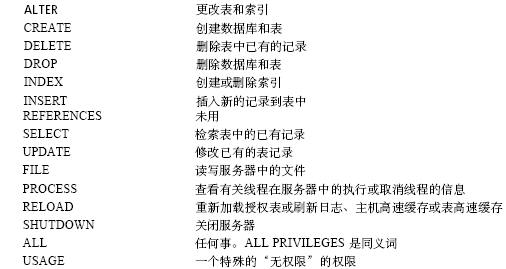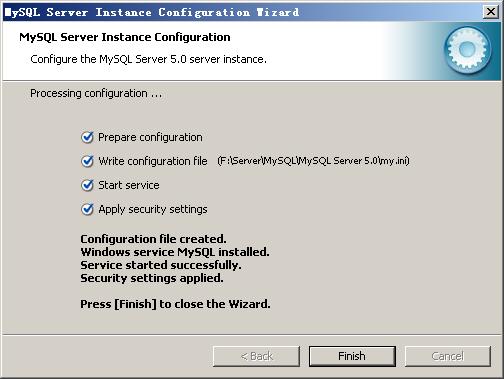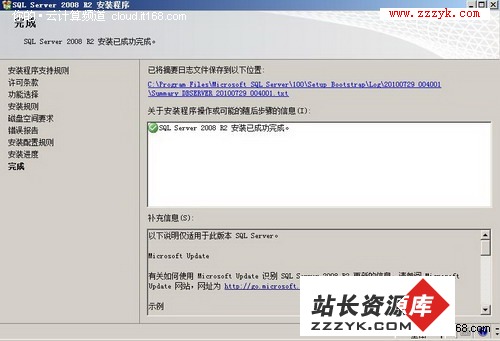mysql 易做图plain的语法与用法
mysql教程 易做图plain的语法与用法
explain [extended] select … from … where …
如果使用了extended,那么在执行完explain语句后,可以使用show warnings语句查询相应
的优化信息。
比如我们执行 select uid from user where uname=’scofield’ order by uid 执行结
果会有
| id | select_type | table | type | possible_keys | key | key_len |
ref | rows | Extra |
这些东西。
其中 table 表示是哪个表的数据。
type比较重要。表示链接的类型。链接类型由好到坏的,依次是 system > const >
eq_ref > ref > fulltext > ref_or_null > index_merge > unique_subquery >
index_subquery > range > index > ALL
一般情况,至少要达到 range 级别,最好是 ref 级别。否则可能会有性能问题。
possible_keys 是指可以应用到该表的索引,如果为NULL则没有。
key 是指用到的索引。
key_len 是索引的长度,在不影响查询精度的情况下,值越小越好。
ref 是指索引的那一列被使用了。一般会是个常数。
rows 是指有多少行。
extra 是指额外的信息。也是比较重要的。如果值为 distinct ,说明mysql 找到了域行联
合匹配的行,就不再查找了。
如果值为 not exits : mysql优化了 left join ,一旦找到了 left join 匹配的行,便
不再进行搜索了。
如果值为 rang checked for each : 没有找到理想的索引。
如果为 using filesort ,则需要改进sql了。这说明 mysql执行 需要 文件排序。这是比
较影响效率的。
如果为 using temporary , 这是使用了 临时表。 这种情况也比较影响效率,sql需要改
进。或者从应用层进行改进。
如果为 where used 说明使用了where语句。如果 type为 all 或者 index ,一般会出现这
样的结果。这样的问题,一般是查询需要改进。
在一般稍大的系统中,基本尽可能的减少 join ,子查询 等等。mysql就使用最简单的查询
,这样效率最高。至于 join 等,可以放在应用层去解决
二.explain输出解释
+----+-------------+-------+-------+-------------------+---------+---------
+-------+------+-------+
| id | select_type | table | type | possible_keys | key | key_len |
ref | rows | Extra |
+----+-------------+-------+-------+-------------------+---------+---------
+-------+------+-------+
1.id
我的理解是SQL执行的顺利的标识,SQL从大到小的执行.
例如:
mysql> explain select * from (select * from ( select * from t3 where
id=3952602) a) b;
+----+-------------+------------+--------+-------------------+---------+---
------+------+------+-------+
| id | select_type | table | type | possible_keys | key |
key_len | ref | rows | Extra |
+----+-------------+------------+--------+-------------------+---------+---
------+------+------+-------+
| 1 | PRIMARY | <derived2> | system | NULL | NULL |
NULL | NULL | 1 | |
| 2 | DERIVED | <derived3> | system | NULL | NULL |
NULL | NULL | 1 | |
| 3 | DERIVED | t3 | const | PRIMARY,idx_t3_id | PRIMARY | 4
| | 1 | |
+----+-------------+------------+--------+-------------------+---------+---
------+------+------+-------+
很显然这条SQL是从里向外的执行,就是从id=3 向上执行.
2. select_type
就是select类型,可以有以下几种
(1) SIMPLE
简单SELECT(不使用UNION或子查询等) 例如:
mysql> explain select * from t3 where id=3952602;
+----+-------------+-------+-------+-------------------+---------+---------
+-------+------+-------+
| id | select_type | table | type | possible_keys | key | key_len |
ref | rows | Extra |
+----+-------------+-------+-------+-------------------+---------+---------
+-------+------+-------+
| 1 | SIMPLE | t3 | const | PRIMARY,idx_t3_id | PRIMARY | 4 |
const | 1 | |
+----+-------------+-------+-------+-------------------+---------+---------
+-------+------+-------+
(2). PRIMARY
我的理解是最外层的select.例如:
mysql> explain select * from (select * from t3 where id=3952602) a ;
+----+-------------+------------+--------+-------------------+---------+---
------+------+------+-------+
| id | select_type | table | type | possible_keys | key |
key_len | ref | rows | Extra |
+----+-------------+------------+--------+-------------------+---------+---
------+------+------+-------+
| 1 | PRIMARY | <derived2> | system | NULL | NULL |
NULL | NULL | 1 | |
| 2 | DERIVED | t3 | const | PRIMARY,idx_t3_id | PRIMARY | 4
| | 1 | |
+----+-------------+------------+--------+-------------------+---------+---
------+------+------+-------+
(3).UNION
UNION中的第二个或后面的SELECT语句.例如
mysql> explain select * from t3 where id=3952602 union all select * from t3
;
+----+--------------+------------+-------+-------------------+---------+---
------+-------+------+-------+
| id | select_type | table | type | possible_keys | key |
key_len | ref | rows | Extra |
+----+--------------+------------+-------+-------------------+---------+---
------+-------+------+-------+
| 1 | PRIMARY | t3 | const | PRIMARY,idx_t3_id | PRIMARY | 4
| const | 1 | |
| 2 | UNION | t3 | ALL | NULL | NULL |
NULL | NULL | 1000 | |
|NULL | UNION RESULT | <union1,2> | ALL | NULL | NULL |
NULL | NULL | NULL | |
+----+--------------+------------+-------+-------------------+---------+---
------+-------+------+-------+
(4).DEPENDENT UNION
UNION中的第二个或后面的SELECT语句,取决于外面的查询
mysql> explain select * from t3 where id in (select id from t3 where
id=3952602 union all select id from t3) ;
+----+--------------------+------------+--------+-------------------+------
---+---------+-------+------+--------------------------+
| id | select_type | table | type | possible_keys | key
| key_len | ref | rows | Extra |
+----+--------------------+------------+--------+-------------------+------
---+---------+-------+------+--------------------------+
| 1 | PRIMARY | t3 | ALL | NULL | NULL
| NULL | NULL | 1000 | Using where |
| 2 | DEPENDENT SUBQUERY | t3 | const | PRIMARY,idx_t3_id |
PRIMARY | 4 | const | 1 | Using index |
| 3 | DEPENDENT UNION | t3 | eq_ref | PRIMARY,idx_t3_id |
PRIMARY | 4 | func | 1 | Using where; Using index |
|NULL | UNION RESULT | <union2,3> | ALL | NULL | NULL
| NULL | NULL | NULL | |
+----+--------------------+------------+--------+-------------------+------
---+---------+-------+------+--------------------------+
补充:数据库,mysql教程




